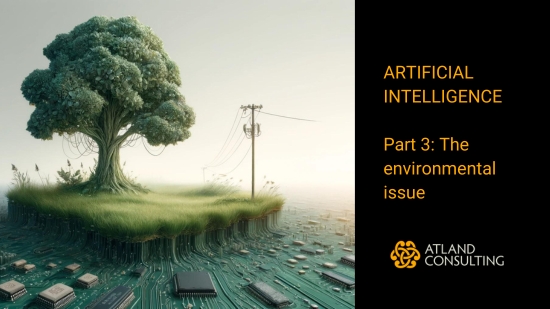We’ve addressed this issue in previous posts, but due to its importance and complexity, we must insist on it again: the alignment of values and objectives when growing as an impact economy entity is crucial. This process involves not just the management and employees on a superficial level; it’s about a deep commitment to the organizational mission that drives every decision and action within the company.
Some still hold onto the vision or profit at any price of traditional companies or continue based on the sacrifice and generosity of classic NGOs. The rise of social economy organizations requires the growth strategies of the former and the priority order of the latter. This means adopting a hybrid model that balances profitability with social and environmental commitment, without compromising one for the other.
This is only possible if all organization members are aligned with its principles and objectives. This alignment requires that each worker looks beyond their immediate and mandatory functions. They must understand how their work contributes to achieving the broader objectives of the organization, fostering a sense of purpose and belonging that transcends daily tasks. Workers “blind” to other organization elements are nearly incompatible with organizations or directly a contradiction to the values pursued, which will be increasingly distant if we are not able to “apply the story” to ourselves.
To ask this of workers, we must ensure that each person is in the right position and that their talent is developed and maximized. This goes beyond satisfying salary needs; it’s about ensuring that each employee has opportunities for personal and professional growth within the company. The selection and development of personnel should be based on a labor craft approach, recognizing and cultivating individual talent for the benefit of the whole.
This approach must start from the moment of personnel selection and continue through continuous training and development programs. Checking off items is good for playing bingo, but in this labor context, we need a more sophisticated and personalized approach that recognizes each employee’s unique skills and how these can be improved and applied to achieve common objectives.
The clarity of purpose is essential in this process. Closely related to the need to go beyond what is in front of us, workers need to know the purpose of their work. Every task, project, and meeting is part of a final objective that contributes to the organization’s broader mission. This understanding transforms routine work into a valuable contribution, increasing motivation and commitment.
Every team member contributes, and it’s necessary that they know how they do so. This requires clear and effective communication of the objectives and how each role aligns with these. With these two ideas in motion, individual commitment and group cohesion will be strongly reinforced, creating a dynamic organizational culture where personal and collective growth are priorities. An organization is not a zoo of separated and caged animals; it’s a living ecosystem where everything is related. Embracing that reality will allow us to manage it to everyone’s benefit.
Thus, the difficulties and doubts that will come with expansion will not disappear but will be easier to overcome. The establishment of clear and achievable objectives, consistent with the company’s cultural purpose, is fundamental. Employees must know these objectives and understand how their daily work contributes to achieving them. Active participation in defining and reviewing these objectives is also crucial, as it promotes a sense of ownership and commitment to the results.
The type of participation and consultation dynamics is heavily conditioned by the size of the entity. Smaller organizations can afford more horizontal and open approaches, while larger ones will need more organized structures to ensure that all organization levels are involved and understand their role in the broader context. For large organizations, the challenge is to maintain effective communication and participation through more complex structures, which may require more sophisticated communication tools and strategies.
Organizational culture plays a vital role in this process. Without a culture that fosters transparency, bidirectional communication, and effective delegation, aligning values and objectives becomes an even greater challenge. It’s crucial that all organization levels practice transparency and that there’s a constant flow of information. This includes sharing both successes and objectives, as well as challenges and areas for improvement.
Furthermore, recognizing and celebrating individual and team contributions is crucial. This not only improves morale and commitment but also reinforces the importance of each employee in achieving organizational objectives. Celebrating achievements, both big and small, contributes to a positive and motivating atmosphere.
To maintain this alignment and commitment, organizations must invest in the continuous development of everyone. This includes training and education focused not only on technical skills but also on developing soft skills, such as leadership, communication, and change management. These skills are essential for navigating the dynamic environment of the impact economy and for leading by example.
Finally, establishing an effective feedback system is fundamental for maintaining alignment and growth. Employees need to know how their work impacts the organization and receive constructive feedback on their performance. Similarly, they should have the opportunity to express their ideas and concerns. A culture that values and acts on feedback promotes continuous improvement and reinforces the alignment between individual and organizational objectives.
In summary, aligning values and objectives in an impact economy organization is a complex process that requires commitment, communication, and a personalized approach to employee development. Byfocusing on these key elements, organizations can build a more committed and cohesive team, ready to face challenges and significantly contribute to the success and social impact of the company.
We are in 2024, and that means much more than a number on the calendar. Social economy entities face specific challenges in terms of growth, and solving them will not be easy. Having a good team is precisely the best way to face work uncertainty and help alleviate the uncertainty of everything else because improving the world is, ultimately, the driving force behind all of this.



